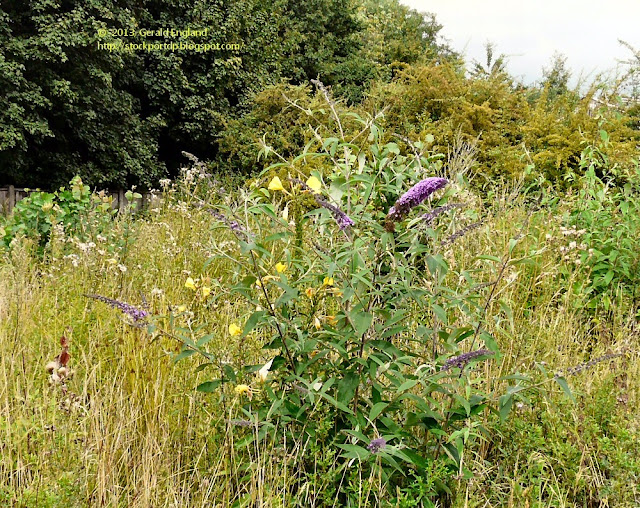This is a black and white view of Woodley Station in 2013. It was opened on 5 August 1862 by the Manchester, Sheffield and Lincolnshire Railway and later became a junction when a line from Stockport Tiviot Dale opened in 1865. The station subsequently became jointly owned and operated by the MS&L, Great Northern Railway and Midland Railway as part of the Cheshire Lines Committee system. The Stockport route closed to passengers in January 1967, although a short section at the eastern end remains in use for goods traffic (serving a Tarmac stone terminal and the waste recycling plant at Bredbury - the one that caught fire ten days ago! - see Fire behind McDonald's).
It was once a busy line that ran to Macclesfield and beyond but now there is just an half-hourly service from Manchester Piccadilly to Rosehill (Marple).
Compare it with scene below taken in 1989.
The old station buildings have been sold off and are private houses. Note how the windows on the station side have been blocked off. The train running today, a two coach diesel unit, is much the same as the one in 1989.
![Creative Commons Licence [Some Rights Reserved]](http://creativecommons.org/images/public/somerights20.gif) © Copyright Peter Whatley and licensed for reuse under this Creative Commons Licence.
© Copyright Peter Whatley and licensed for reuse under this Creative Commons Licence.A contribution to The Weekend in Black and White and Scenic Weekends.































